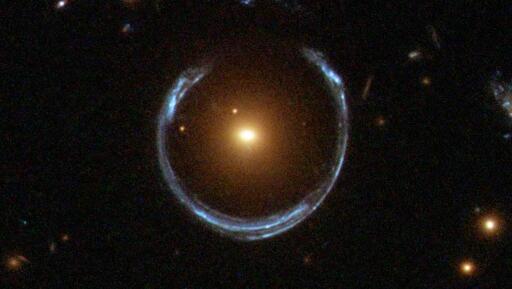Astronomers have discovered what may be the most massive black hole ever found, a cosmic behemoth weighing 36 billion times the mass of our Sun and located 5 billion light-years away in a galaxy dubbed the Cosmic Horseshoe. The discovery, published August 7 in Monthly Notices of the Royal Astronomical Society, pushes the boundaries of what scientists believe is possible in the universe.
The ultramassive black hole is roughly 10,000 times heavier than Sagittarius A*, the supermassive black hole at the center of our Milky Way galaxy. It sits close to the theoretical upper limit for black hole size, which cosmological models suggest is around 40 to 50 billion solar masses.
It uses a new method to detect and measure black holes in certain indirect ways.
I would like to see results duplicated by other experiments.
Amazing.
Just some general info on max size:
Some studies have suggested that the maximum natural mass that a black hole can reach, while being luminous accretors (featuring an accretion disk), is typically on the order of about 50 billion M☉. However, a 2020 study suggested even larger black holes, dubbed Stupendously large black holes (SLABs), with masses greater than 100 billion M☉, could exist based on used models; some studies place the black hole at the core of Phoenix A in this category.
There is a natural upper limit to how large supermassive black holes can grow. Supermassive black holes in any quasar or active galactic nucleus (AGN) appear to have a theoretical upper limit of physically around 50 billion M☉ for typical parameters, as anything above this slows growth down to a crawl (the slowdown tends to start around 10 billion M☉) and causes the unstable accretion disk surrounding the black hole to coalesce into stars that orbit it. A study concluded that the radius of the innermost stable circular orbit (ISCO) for SMBH masses above this limit exceeds the self-gravity radius, making disc formation no longer possible.
A larger upper limit of around 270 billion M☉ was represented as the absolute maximum mass limit for an accreting SMBH in extreme cases, for example its maximal prograde spin with a dimensionless spin parameter of a = 1, although the maximum limit for a black hole’s spin parameter is very slightly lower at a = 0.9982. At masses just below the limit, the disc luminosity of a field galaxy is likely to be below the Eddington limit and not strong enough to trigger the feedback underlying the M–sigma relation, so SMBHs close to the limit can evolve above this.
Although modern UMBHs within quasars and galactic nuclei cannot grow beyond around (5–27)×10^10 M☉ through the accretion disk and as well given the current age of the universe, some of these monster black holes in the universe are predicted to still continue to grow up to stupendously large masses of perhaps 10^14 M☉ during the collapse of superclusters of galaxies in the extremely far future of the universe.
I see what you did to that URL
M’assive [tips accretion disk]
imagine being able to get close enough to one of those beasts to see it create stars that orbit it. Fucking christ.
Imagine having like a portal-window in your house with a view to one of them & just sip you chosen beverage while looking at the show (maybe the portal has some time dilation so that you can appreciate the changes on a daily level instead of centuries).
This is a Stargate episode
Also some rich guys home apartment (with every room on a different planet or other things) in Hyperion Cantos.
Daunting view. 😳
Can you explain in one sentence to us dummies what the hieroglyphs mean?
Solar mass. I also believe that the exponent formatting is wrong. The last size mentioned would be 10 to the power of 14 solar masses.
Oh, yeah, thx - my bad copypasta (the superscript didn’t format), fixed it now.
M☉ is notation for Solar Mass, or the mass of our sun.
M☉ solar mass, M☉ problems
Something something your mom.
Woah big chungus



